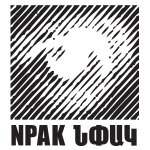PORTRAIT IN BETWEEN MODERNISM AND INNOVATION
What is a portrait? Is it memory? Is it evidence of recognition? Is it an observer (a witness), a collective image of the time, or simply an image by which imagination is given an opportunity to construct an environment, a place and an era of sorts? In the times of sweeping mimicria, when symbolic attire is no more a monopoly and the religious “uniform” is only an agent of dominance, I believe discussion on image is quite urgent. In the arts, it is a long time that we do not meet images which are associated with “signs”. However, today images of politicians and stars follow us everywhere, forcing upon us their image clichés. This is not altogether an innocent and unbiased preoccupation, as it appears at the first instance. In a very aggressive yet often cautious temptation, they show how the contemporary or modern image is supposed to be. Is it important to have a “personal face”? Or photo-retouching and make-up are very convenient means of correcting, homogenizing, conforming the face to necessary standards? The issue is as urgent as the theory of the value of gold, oil or hard currency. In quite a few new composite terms we often meet the familiar expression of “The Face Control”.
Of course it is difficult to predict the image which matches the “control”, because images of modernism are too contradictory to introduce any kind of distinctiveness in individual behavior or collective image. Continuously alternating processes of emancipation and conservation, as a rule, try to diminish their past mistakes, or rather heal the scars of these mistakes. A process which includes the disappointed individuals in visible processes. The results of this are quite evident when personal expressions are communized and standardized. However, the demand for individualization is not removed, and the face, this bareness, which is not considered bareness, again comes fore as an observer/witness bearing the seal of the time.
These witnesses are the portraits piled in each of our photo-archives. Although rare are the ones which signify something special or more importantly will be remembered without complementary text. But we start doubting our memory and search for methods to revive it. These are only proofs which sooth our decaying physical and intellectual potential, and have hardly any influence on someone else (each has his own). Recognizability of personality and priority of its content is the most complex and contested issue, which never stops being “presumably interesting”. But where is that interest? Is it in presumed joy or presumed boredom? Personal and collective egoism acquires antagonistic posture, which is resulted from politics. It is impossible to exclude or not to notice it. It is only possible to naively reject it, which, from the point of view of filling a certain void, is an old and well known position. In contemporary post-modern situation new appreciation of old concepts requires continuous rejection or revision of accepted norms of criticism and analysis. In the era of search for new ideas it is characteristic to find thoughts in abstract and utopian expressions, and present reality only as a reflection of generalized social protest. As a rule, contradictory stereotypical “official” and “critical” concepts of the Soviet legacy are negative and relate to tendency of individualism, as a decadent and unruly phenomenon. Civil developments, including new approaches, materials, technologies, in general, and the arts in particular, proceed with or without our personalized participation. However, I think there is an undisputable condition that image-forming art has to be conceptual, interesting and impressive. Art is enforcement of the right of taking individual position and needs unexpectedly recognizable portraits, in the era of conflicting alternative stereotypes. The objective of “Portrait in between modernism and innovation” exhibition is to bring together developments of portraiture of the nineties and the first decade of the year 2000, which is outcome of cooperation between artists and contemporary centers.
Arevik Arevshatian


